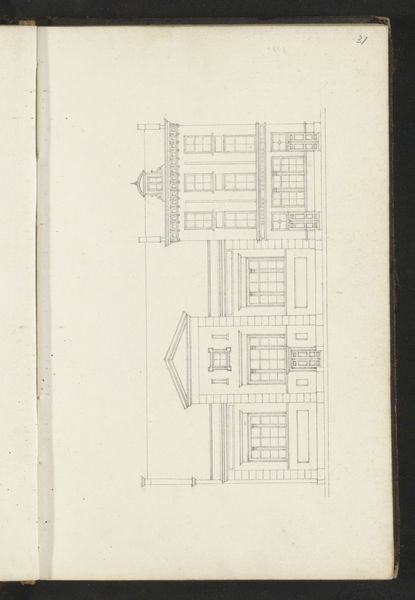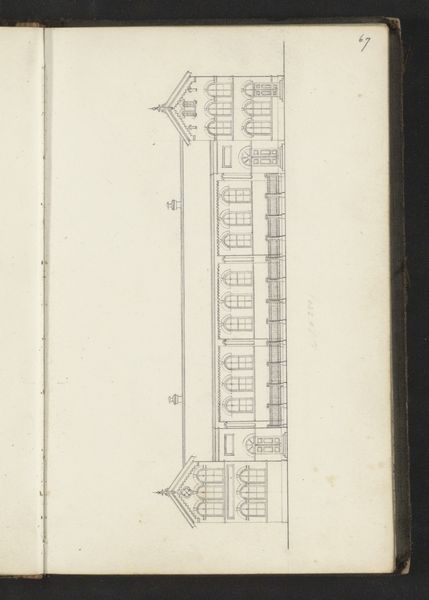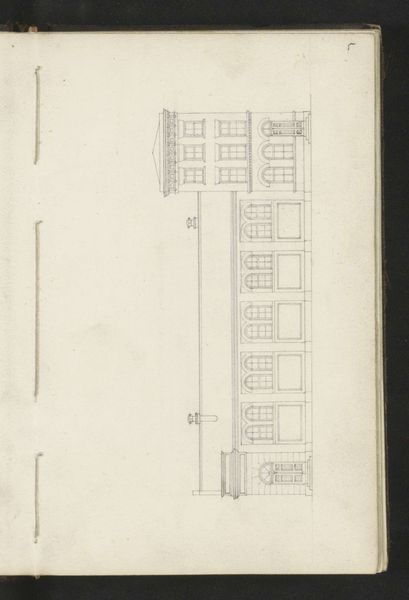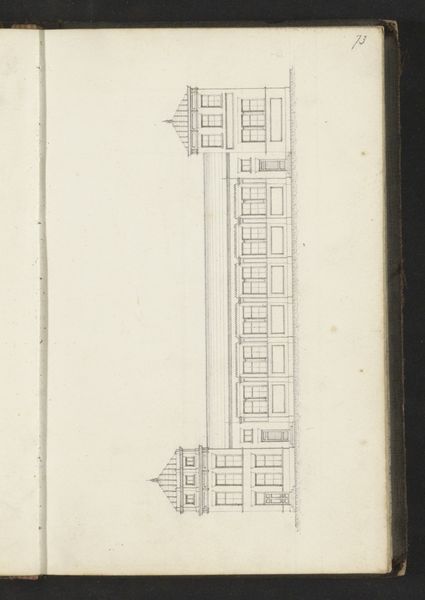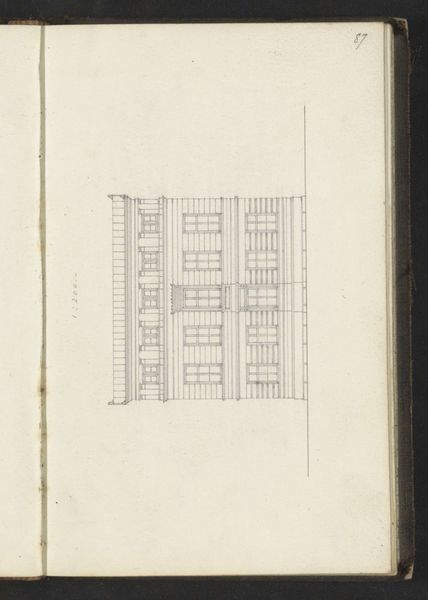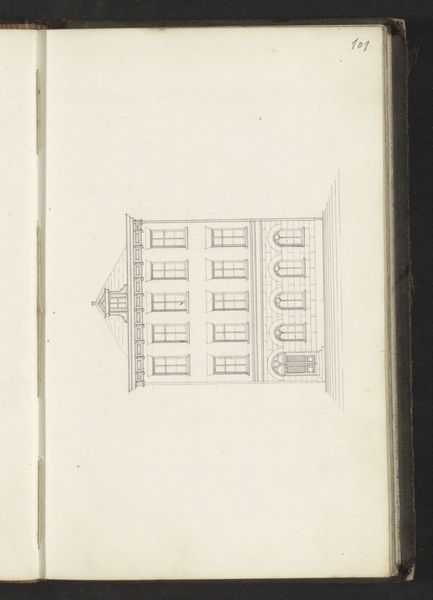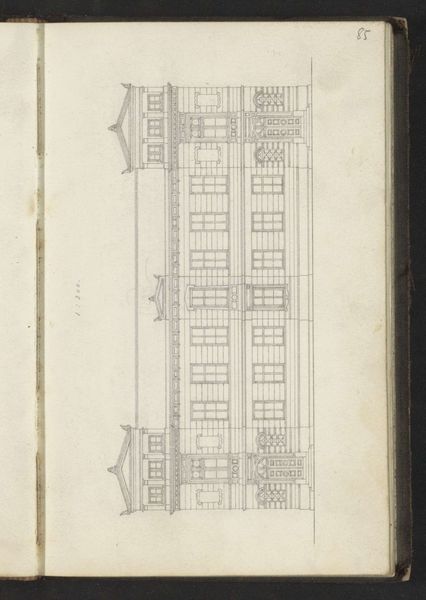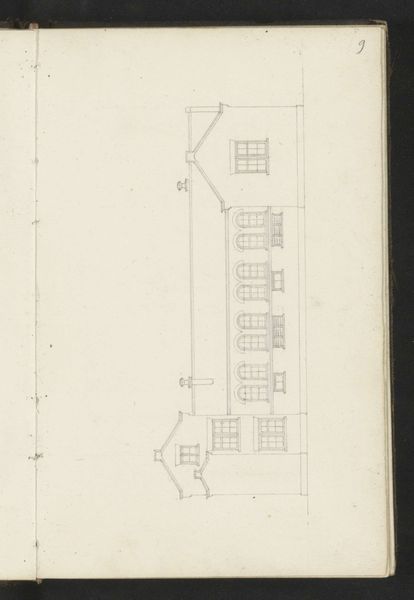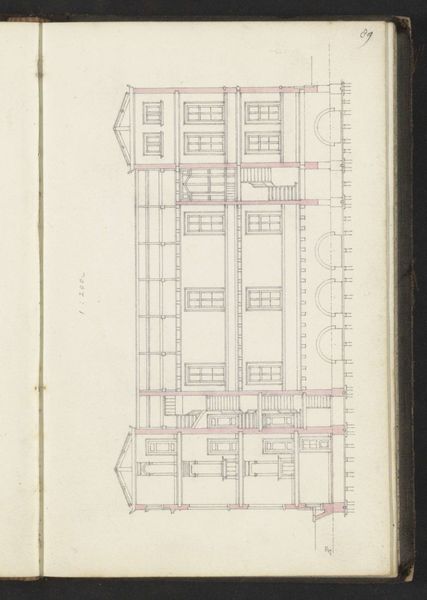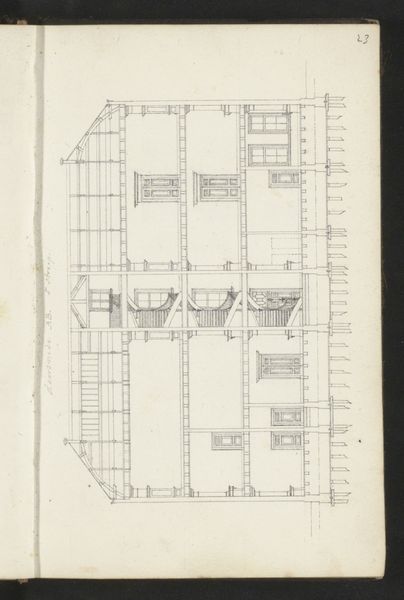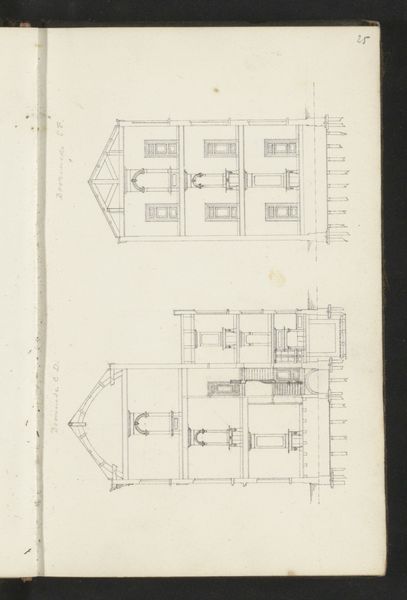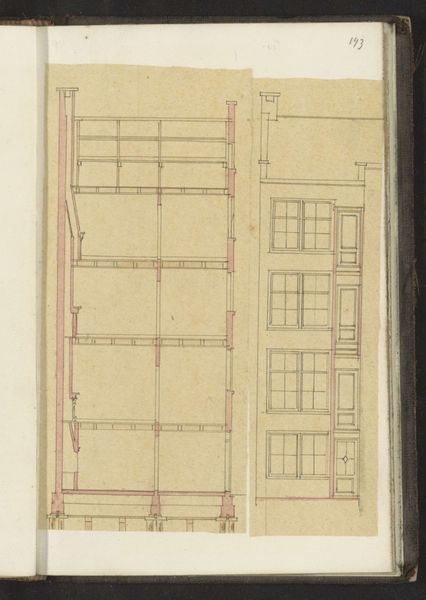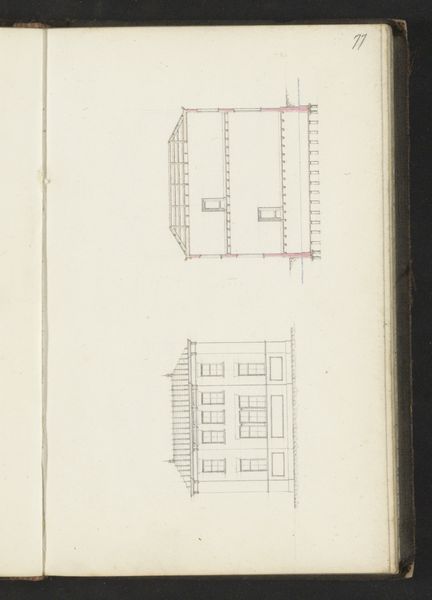
Copyright: Rijks Museum: Open Domain
This is Willem Springer Jr.’s architectural drawing of a building with a neoclassical facade. Executed in the Netherlands, likely in the mid-19th century, the drawing reflects the cultural aspirations of the time. Neoclassicism, with its references to ancient Greece and Rome, was often employed to evoke ideas of order, reason, and civic virtue. This style was favored by those in power because it associated them with the perceived glory of past empires. In this drawing, we can see how the symmetrical design, the use of classical motifs, and the emphasis on clean lines all contribute to the sense of dignity and authority. Architectural drawings like this offer us a glimpse into the values and ideals of the society that produced them. By examining the drawing in the context of Dutch history, we can gain a deeper understanding of its significance. We might explore archives, period publications, and other historical documents to better understand the social and institutional context for neoclassical architecture in the Netherlands.
Comments
No comments
Be the first to comment and join the conversation on the ultimate creative platform.
